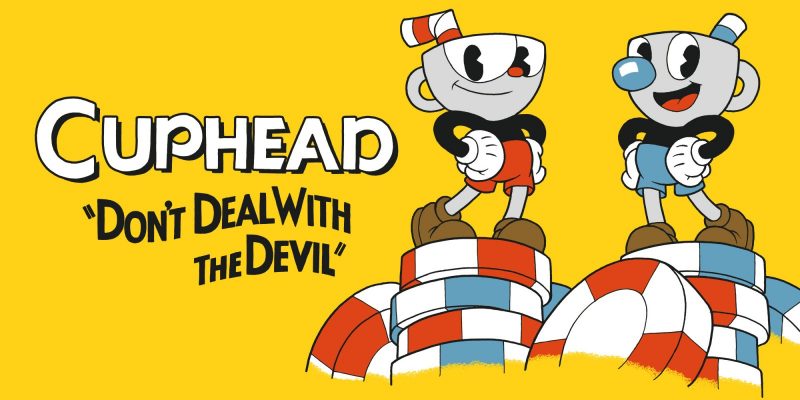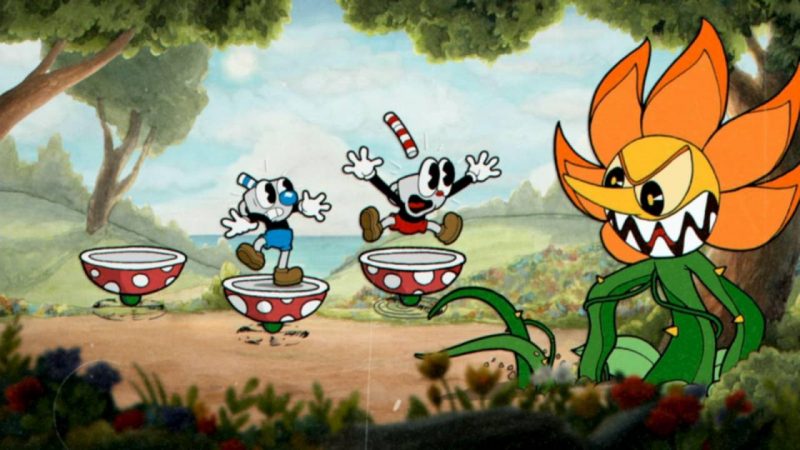With the announcement of Cuphead on the Switch, the gaming landscape has been well and truly shaken going forward. Nintendo used to be the dominant force in gaming, revitalizing a whole industry that had collapsed upon itself. They went head to head with Sega and Sony in a brutal, no prisoners console war, battling them with Italian plumbers and their impressive and powerful bits (not a typo). Since the Wii, Nintendo has taken a different approach to its competitors, and how they are viewed in the gaming sphere has only been solidified by the recent love-in with Microsoft.
In the Spring 2019 Nindies showcase, Nintendo headlined with the announcement that the hard as hell but universally adored Cuphead was making its way to the Switch. This comes as a huge shock because the game is a Microsoft console exclusive, but what is even stranger is the fact that it is Microsoft who are the ones putting the game on the Nintendo console. The voiceover in the Nindies showcase even thanked their “friends at Microsoft.” As gamers, we are more accustomed to the hardware companies taking potshots at each other across E3 press conferences, rather than playing nice with one another.

This isn’t even the first showing of such a collaboration between the two companies but definitely is one of the most meaningful and impactful, and potentially shows what to expect going forward. Previously, we have seen Xbox Live announced for Switch, cross-play enabled games such as Rocket League and Fortnite, and even Mario skins in Minecraft. You could even feasibly look further back to Microsoft allowing Rare to continue making Banjo-Kazooie games for the GBA (GameBoy Advance), but it probably has little to do with the current business philosophy. The real question from these announcements is: What is it that Microsoft hopes to achieve by partnering up with Nintendo?
There are rumours that the next Xbox will be a digital only console and will have no method of playing physical games. With the announcement of a disc-less Xbox One S, their budding partnership with Nintendo and the fact that Microsoft is doubling down on Xbox Game Pass seems to point in that direction. Microsoft seems to be laying down the foundations for its version of the “Netflix” model for streaming games. The more devices that have access to the service, the easier it becomes to get subscribers. One of the best ways to get subscribers is to take away the high cost of entry of buying a new games console. If Microsoft’s next big play is to get its content to as many players as possible, then adding the Switch to that library makes a lot of sense. Google’s Stadia is offering console gaming to any device that has a chrome browser, which is millions of potential users. The battle for the “Netflix” of games could come down to who has the largest number of compatible devices.
The Switch is a popular device with gamers. Sales are smashing estimates and games are selling huge volumes on the system, even when compared to their Xbox and PlayStation counterparts. The Switch also has something Microsoft has never had: a huge presence in Japan. By having their content on the Switch they open themselves up to millions of potential subscribers but also a whole new market that has been reluctant to buy Microsoft hardware. From a business point of view, having Microsoft’s content on the Switch makes a lot of sense, but the idea of giving your exclusive gaming library to a competitor doesn’t.

That probably has a lot to do with how Nintendo has positioned itself in the market. Ironically since Microsoft entered the industry, Nintendo has stopped trying to compete in terms of raw processing power. Instead they have opted to diversify and find unique angles; being creative, tapping into new markets and experimenting in new technologies. Although they pushed phenomenal numbers with the Nintendo Wii, they were beginning to be seen as a “secondary” console for gamers, who sought their “core” experiences with Sony and Microsoft.
This has allowed Nintendo to carve out its own place in the market regardless of the specs and capabilities of Microsoft and Sony’s machines. It doesn’t always work (Wii U) but when it does (Wii), it does. Though Nintendo’s success doesn’t usually have a negative impact on Microsoft’s sales, it’s Sony’s successes that have the biggest impact. As Nintendo has positioned itself as a non-direct competitor, the prospect of collaborating with them makes a lot more sense for Microsoft than working with a company such as Sony.
What the future holds for Microsoft on Switch is anybody’s guess at this point, but the arrival of Cuphead opens the gates for the dreamers among us to start theorizing. Will we one day get to play Halo on Switch? Will new Xbox exclusives release at the same time for Xbox and Switch? Will Banjo and Kazooie find their way into Super Smash Bros. Ultimate? Will Rare make their triumphant return to a Nintendo console? Only time will tell of the extent of the two companies collaboration but one thing is for sure, this is only the beginning.


